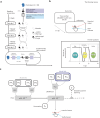D2/D3 dopamine supports the precision of mental state inferences and self-relevance of joint social outcomes
- PMID: 38746690
- PMCID: PMC11088992
- DOI: 10.1038/s44220-024-00220-6
D2/D3 dopamine supports the precision of mental state inferences and self-relevance of joint social outcomes
Abstract
Striatal dopamine is important in paranoid attributions, although its computational role in social inference remains elusive. We employed a simple game-theoretic paradigm and computational model of intentional attributions to investigate the effects of dopamine D2/D3 antagonism on ongoing mental state inference following social outcomes. Haloperidol, compared with the placebo, enhanced the impact of partner behaviour on beliefs about the harmful intent of partners, and increased learning from recent encounters. These alterations caused substantial changes to model covariation and negative correlations between self-interest and harmful intent attributions. Our findings suggest that haloperidol improves belief flexibility about others and simultaneously reduces the self-relevance of social observations. Our results may reflect the role of D2/D3 dopamine in supporting self-relevant mentalising. Our data and model bridge theory between general and social accounts of value representation. We demonstrate initial evidence for the sensitivity of our model and short social paradigm to drug intervention and clinical dimensions, allowing distinctions between mechanisms that operate across traits and states.
Keywords: Computational models; Predictive markers.
© The Author(s) 2024.
Conflict of interest statement
Competing interestsThe authors declare no competing interests.
Figures





Similar articles
-
Disruption of dopamine D2/D3 system function impairs the human ability to understand the mental states of other people.PLoS Biol. 2024 Jun 13;22(6):e3002652. doi: 10.1371/journal.pbio.3002652. eCollection 2024 Jun. PLoS Biol. 2024. PMID: 38870319 Free PMC article. Clinical Trial.
-
Dopamine manipulations modulate paranoid social inferences in healthy people.Transl Psychiatry. 2020 Jul 5;10(1):214. doi: 10.1038/s41398-020-00912-4. Transl Psychiatry. 2020. PMID: 32624569 Free PMC article. Clinical Trial.
-
Reduction in social learning and increased policy uncertainty about harmful intent is associated with pre-existing paranoid beliefs: Evidence from modelling a modified serial dictator game.PLoS Comput Biol. 2020 Oct 15;16(10):e1008372. doi: 10.1371/journal.pcbi.1008372. eCollection 2020 Oct. PLoS Comput Biol. 2020. PMID: 33057428 Free PMC article.
-
Bitropic D3 Dopamine Receptor Selective Compounds as Potential Antipsychotics.Curr Pharm Des. 2015;21(26):3700-24. doi: 10.2174/1381612821666150724100830. Curr Pharm Des. 2015. PMID: 26205291 Review.
-
How dopamine shapes trust beliefs.Prog Neuropsychopharmacol Biol Psychiatry. 2025 Jan 10;136:111206. doi: 10.1016/j.pnpbp.2024.111206. Epub 2024 Nov 23. Prog Neuropsychopharmacol Biol Psychiatry. 2025. PMID: 39586370 Review.
Cited by
-
(Mal)adaptive Mentalizing in the Cognitive Hierarchy, and Its Link to Paranoia.Comput Psychiatr. 2024 Sep 11;8(1):159-177. doi: 10.5334/cpsy.117. eCollection 2024. Comput Psychiatr. 2024. PMID: 39280241 Free PMC article.
-
Impressions about harm are formed rapidly and then refined, modulated by serotonin.Soc Cogn Affect Neurosci. 2024 Oct 23;19(1):nsae078. doi: 10.1093/scan/nsae078. Soc Cogn Affect Neurosci. 2024. PMID: 39460542 Free PMC article. Clinical Trial.
-
Integrated dopamine sensing and 40 Hz hippocampal stimulation improves cognitive performance in Alzheimer's mouse models.Nat Commun. 2025 Jul 1;16(1):5948. doi: 10.1038/s41467-025-60903-1. Nat Commun. 2025. PMID: 40592843 Free PMC article.
-
L-DOPA and oxytocin influence the neural correlates of performance monitoring for self and others.Psychopharmacology (Berl). 2024 May;241(5):1079-1092. doi: 10.1007/s00213-024-06541-9. Epub 2024 Jan 29. Psychopharmacology (Berl). 2024. PMID: 38286857 Free PMC article. Clinical Trial.
-
Disruption of dopamine D2/D3 system function impairs the human ability to understand the mental states of other people.PLoS Biol. 2024 Jun 13;22(6):e3002652. doi: 10.1371/journal.pbio.3002652. eCollection 2024 Jun. PLoS Biol. 2024. PMID: 38870319 Free PMC article. Clinical Trial.
References
LinkOut - more resources
Full Text Sources
